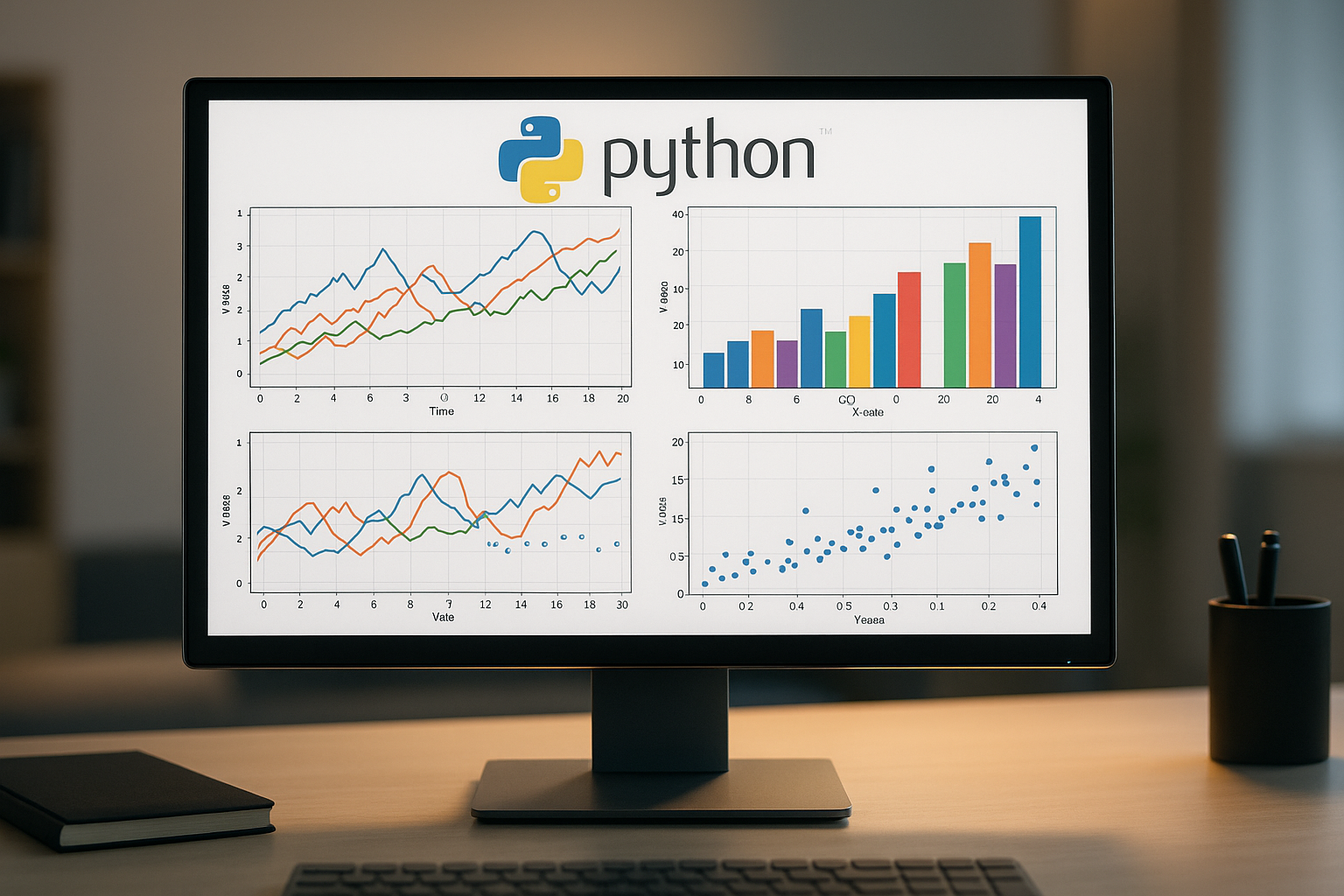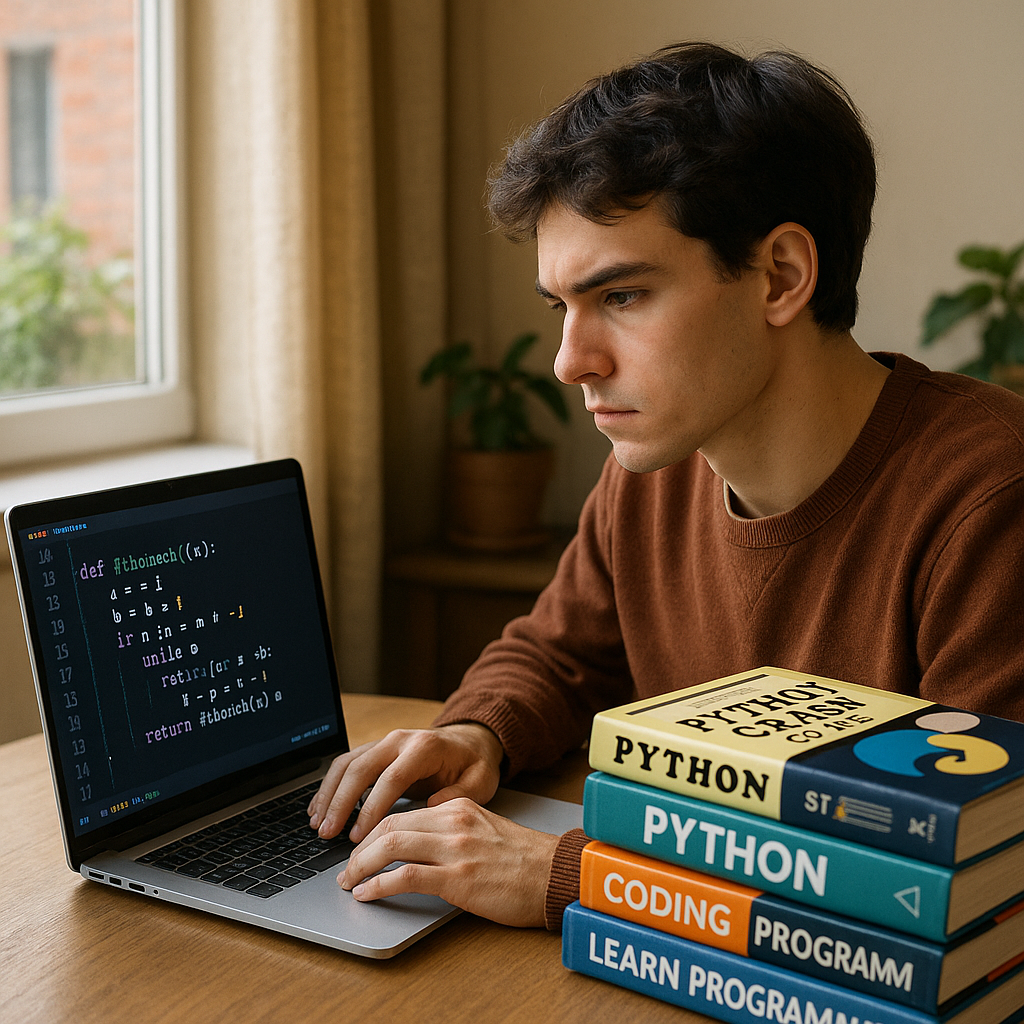Master Python with These Essential Libraries
Learning Python can feel overwhelming when you're staring at thousands of available libraries. Trust me, I've been there. When I first started my Python journey three years ago, I spent weeks jumping between tutorials, not knowing which libraries actually mattered for real-world projects.
After building dozens of projects and working with data science teams, I've discovered the truth: you don't need to learn every Python library. You need to master the essential ones that form the backbone of most Python applications.
Let me share the libraries that transformed my coding from scattered experiments into professional-grade projects
| A programmer's workspace showcasing Python development environment with essential libraries |
Why These Python Libraries Matter More Than Others
Before we jump into specific libraries, let me tell you why focusing on essential libraries changed everything for me. When I started learning Python, I made the mistake of trying to learn everything at once. I'd install random libraries, follow tutorials that went nowhere, and felt constantly behind.
The breakthrough came when my mentor told me something simple: "Learn the libraries that 90% of Python developers use daily, not the exotic ones that make headlines."
These essential Python libraries solve real problems you'll face in every project. They're not just popular because they're trendy. They're popular because they work, they're well-documented, and they have massive communities supporting them.
Data Manipulation: Your Foundation Libraries
NumPy: The Mathematical Powerhouse
Why you absolutely need NumPy: Every time you work with numbers in Python, you're probably using NumPy without realizing it. This library handles arrays and matrices with lightning speed.
import numpy as np
Create arrays effortlesslydata = np.array([1, 2, 3, 4, 5]) matrix = np.array([[1, 2], [3, 4]])
Mathematical operations that would take loops become one-linersresult = np.sqrt(data) * 2
Real-world application: Use NumPy for everything from calculating financial metrics to processing sensor data. It's roughly 50 times faster than pure Python for numerical operations.
Installation tip: pip install numpy
Pandas: Your Data Manipulation Swiss Army Knife
Why Pandas is non-negotiable: If NumPy handles the math, Pandas handles the data. Think Excel, but with superpowers.
import pandas as pd Load data from anywhere df = pd.read_csv('sales_data.csv')
Clean and analyze in minutes, not hoursclean_data = df.dropna() monthly_sales = df.groupby('month')['sales'].sum()
Personal success story: Last month, I helped a client analyze two years of customer data. What would have taken days in Excel took 30 minutes with Pandas. The client was amazed when I showed them trends they'd never noticed.
Key features that matter:
-
Read data from CSV, Excel, JSON, databases
-
Handle missing data intelligently
-
Group, filter, and aggregate data effortlessly
-
Time series analysis for tracking trends
Data Visualization: Making Your Data Tell Stories
Matplotlib: The Visualization Foundation
Why Matplotlib is essential: Numbers don't persuade people. Visual stories do. Matplotlib turns your data into compelling charts and graphs.
import matplotlib.pyplot as plt
Create professional-looking plotsplt.plot(months, sales) plt.title('Monthly Sales Growth') plt.xlabel('Month') plt.ylabel('Sales ($)') plt.show()
Pro tip: Start with basic line plots and bar charts. These solve 80% of visualization needs.
| Python data visualization examples displaying various charts and analytical plots |
Seaborn: Beautiful Statistical Graphics
Why Seaborn matters: Built on Matplotlib, Seaborn creates stunning statistical visualizations with minimal code.
import seaborn as sns
Create a correlation heatmap in one linesns.heatmap(df.corr(), annot=True)
When I use it: Whenever I need to show relationships between variables or create publication-ready statistical plots.
Web Development: Building Real Applications
Flask: Your Gateway to Web Development
Why Flask beats other frameworks for beginners: Django might be more powerful, but Flask teaches you web development fundamentals without overwhelming complexity.
from flask import Flask app = Flask(__name__) @app.route('/') def home(): return "Hello, World! Your web app is running!" if __name__ == '__main__': app.run(debug=True)
A web application as simple as an expense tracker built with Flask will teach you routing, templates, and database connections.
Key advantages:
-
Minimal setup required
-
Perfect for learning web concepts
-
Scales from simple scripts to complex APIs
-
Extensive documentation and community
Requests: HTTP Made Simple
Why Requests is mandatory: Every modern application connects to APIs. Requests makes this painless.
import requests
Fetch data from any APIresponse = requests.get('https://api.github.com/users/jacobisah') data = response.json() print(data['name'])
The Requests library made API calls feel as simple as opening a web page.
Key benefits:
-
Intuitive syntax that reads like English
-
Automatic error handling
-
Built-in JSON support
-
Cookie and session management
Machine Learning: Your AI Toolkit
Scikit-learn: Machine Learning Made Accessible
Why Scikit-learn dominates: Machine learning sounds intimidating, but Scikit-learn makes it approachable.
from sklearn.model_selection import train_test_split from sklearn.linear_model import LinearRegression
Build a prediction model in 5 linesX_train, X_test, y_train, y_test = train_test_split(X, y, test_size=0.2) model = LinearRegression() model.fit(X_train, y_train) predictions = model.predict(X_test)
An ML project that predicted customer churn for a small business is made possible with Scikit-learn without a PhD in statistics.
A beginner learning Python programming with educational resources and coding environment |
-
Classification, regression, clustering algorithms
-
Model evaluation and selection tools
-
Data preprocessing utilities
-
Consistent API across all algorithms
TensorFlow/PyTorch: Deep Learning Powerhouses
When you need them: For neural networks, image recognition, or natural language processing. Start with TensorFlow if you want Google-backed stability, PyTorch if you prefer research-friendly flexibility.
Honest advice: Don't rush into deep learning. Master the fundamentals first. But when you're ready, these libraries open doors to AI applications.
Testing and Development: Professional Code Practices
Pytest: Testing That Actually Works
Why testing is important: Professional developers test their code. Pytest makes testing so simple, you'll actually do it.
def calculate_profit(revenue, costs): return revenue - costs def test_profit_calculation(): assert calculate_profit(1000, 600) == 400 assert calculate_profit(500, 500) == 0
Career insight: Every job interview asks about testing. Pytest knowledge signals you write professional-quality code.
Getting Started: Your Action Plan
Step 1: Install Python Properly
Make sure you have Python 3.8 or later installed. Use the official Python installer from python.org for the most reliable setup.
Step 2: Master the Big Three First
Start with NumPy, Pandas, and Matplotlib. These three libraries appear in virtually every data-related project. Spend two weeks building small projects with each.
Step 3: Add One Library Per Week
After mastering the foundation, add one new library per week. Build a small project with each new library to cement your understanding.
Step 4: Join the Community
Python's strength is its community. Join r/learnpython on Reddit, follow Python developers on Twitter, and contribute to open-source projects when you're ready.
Common Mistakes I Wish I'd Avoided
Mistake 1: Library hopping without mastering basics
I spent months jumping between exciting new libraries without truly understanding NumPy and Pandas. Master the essentials first.
Mistake 2: Not reading documentation
Every library has excellent documentation. I used to rely on random tutorials instead of official docs. The documentation is usually clearer and more complete.
Mistake 3: Installing everything at once
Create virtual environments for different projects. This prevents library conflicts and keeps your system clean.
Your Python Libraries Learning Path
Month 1: NumPy and Pandas fundamentals
Month 2: Matplotlib for visualization
Month 3: Flask for web development
Month 4: Requests for API integration
Month 5: Scikit-learn for machine learning basics
Month 6: Advanced libraries based on your interests
The Reality Check
Learning these essential Python libraries won't happen overnight. But here's what I guarantee: master these core libraries, and you'll be more productive than 70% of Python developers.
You don't need to know every library that exists. You need to deeply understand the libraries that solve real problems. These are those libraries.
The Python ecosystem is vast and constantly evolving. New libraries appear monthly, promising to revolutionize everything. But the libraries I've shared here have stood the test of time because they solve fundamental problems elegantly.
Your Python journey starts with a single pip install. Pick one library from this list, build something small but complete, and share it with the community. That's how you transform from someone who's learning Python to someone who's mastering Python.
Which library will you master first? The choice is yours, but the path forward is clear.
Remember: Python mastery isn't about knowing every library that exists. It's about deeply understanding the tools that matter most. These essential libraries are your foundation. Build on them, and watch your Python skills soar.
Ready to start your Python journey? Pick your first library and begin building. Your future self will thank you.



Post a Comment